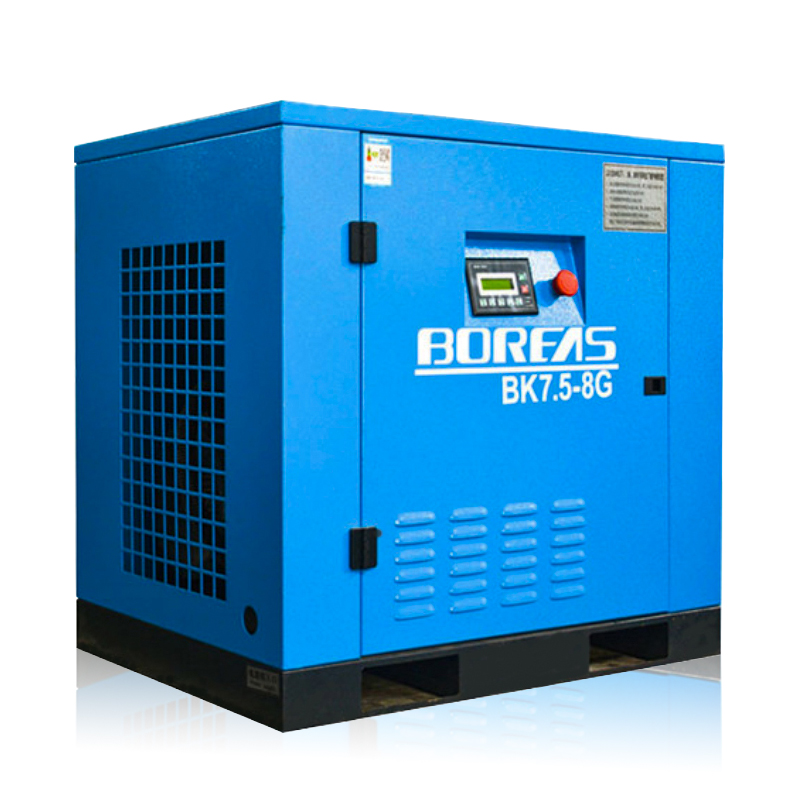Air compressors come in various types, and common models such as reciprocating, screw, and centrifugal compressors differ significantly in terms of working principles and structural designs. Understanding these differences helps users operate equipment more scientifically and safely, reducing risks.
I. Safety Usage Guidelines for Reciprocating Air Compressors
Reciprocating air compressors compress gas through the reciprocating motion of a piston inside a cylinder. The core safety considerations are related to mechanical components and pressure control. Due to the frequent reciprocating movement of parts like pistons and connecting rods, vibrations during operation are significant. Before use, ensure that the base bolts are securely tightened to prevent displacement or even tipping of the equipment caused by vibration. Additionally, regularly inspect wear-prone components such as piston rings and cylinder liners. Excessive wear may lead to gas leakage, affecting compression efficiency and causing unstable pressure in the air storage tank, posing an overpressure risk.
The lubrication system also requires close attention in reciprocating compressors. Lubricating oil serves both to reduce friction and provide sealing. During operation, monitor oil pressure and temperature in real time. Low pressure can result in inadequate lubrication, increasing component wear, while high temperatures may degrade oil performance, potentially leading to fire hazards. Furthermore, the discharge temperature of this type of compressor is relatively high, so it is essential to ensure proper functioning of the cooling system. If cooling fails, high-temperature gas entering the air storage tank significantly increases the risk of explosion.
II. Safety Features of Screw Air Compressors
Screw air compressors compress gas through the meshing of male and female rotors. Compared to reciprocating compressors, they produce less vibration but have unique safety requirements concerning oil and gas flow management. Oil filters and oil separator cores are critical for maintaining smooth oil flow in screw compressors. Failure to replace them on schedule may cause oil passage blockage, preventing effective cooling and lubrication of the rotors, resulting in overheating shutdowns or rotor damage. Therefore, filter elements must be replaced strictly according to the manufacturer’s specified intervals.
In terms of gas flow management, the inlet valve and minimum pressure valve are crucial for stable system operation. Faulty inlet valves may cause abnormal loading and unloading, leading to pressure fluctuations. A malfunctioning minimum pressure valve could result in insufficient pressure within the oil-gas drum, causing oil emulsification and affecting equipment performance and lifespan. Additionally, due to the precision of internal components in screw compressors, unauthorized disassembly or adjustment of internal safety protection devices—such as safety valves and pressure switches—is strictly prohibited during operation, as it may lead to unforeseen accidents.
III. Safety Considerations for Centrifugal Air Compressors
Centrifugal air compressors rely on high-speed rotating impellers to compress gas, offering large flow rates and stable discharge characteristics. However, their operational conditions and operational requirements are highly demanding. Special caution is required during startup. Before starting, ensure that the lubrication and cooling systems are running in advance to bring the lubricating oil to the appropriate temperature and pressure, providing adequate lubrication for high-speed rotating bearings. Otherwise, bearing failure is likely to occur. At the same time, strictly control the rate of speed increase during startup; excessively rapid acceleration may intensify vibrations and even trigger surging, damaging the impeller and casing.
Centrifugal compressors have very high requirements for gas cleanliness. Particulate impurities in the intake air can accelerate impeller wear, affecting equipment performance and safety. Therefore, efficient air filters must be equipped, with regular inspections and replacements of filter elements. Moreover, since centrifugal compressors operate at speeds reaching tens of thousands of revolutions per minute, mechanical failures can be extremely destructive. Hence, during operation, continuously monitor equipment status using vibration and temperature monitoring systems. Immediate shutdown and inspection should be carried out upon detecting abnormal vibrations or sudden temperature changes to prevent escalation of incidents.
Conclusion
Reciprocating, screw, and centrifugal air compressors each have distinct safety usage priorities—from component inspections and lubrication management to gas path maintenance and start-up operations. Users must thoroughly understand the safety characteristics of different compressor types, strictly follow operating procedures, and perform regular maintenance and monitoring to ensure safe and stable equipment operation.
Post time: Jul-04-2025










